Protect Your Health With Immunizations
Health care professionals who are directly and indirectly involved in patient care can be exposed to infectious agents that can be transmitted to and from clinicians and patients.

Health care professionals who are directly and indirectly involved in patient care can be exposed to infectious agents that can be transmitted to and from clinicians and patients. Clinicians should receive vaccinations to protect against exposure to infectious agents, while also minimizing the risk of cross infection. Effective vaccinations are available to prevent infection with: hepatitis B virus; measles, mumps, and rubella; pertussis, tetanus, and diphtheria; varicella; and influenza. Dental hygienists, as members of the dental team who spend the most time with patients, are in a unique position to also educate their patients on the value of vaccinations.
Photo Credit: MarianVejcik / iStock / Getty Images Plus

Hepatitis B Virus
Infection with the hepatitis B virus can lead to lifelong chronic infection and serious liver damage. Health care professionals are in frequent contact with blood, saliva, and other bodily fluids that increase their risk of hepatitis B virus exposure either through percutaneous (puncture through the skin) or mucosal exposure (direct contact with mucous membranes). The hepatitis B vaccination is the most effective measure of prevention. As part of standard precautions and the Occupational Safety and Health Administration’s (OSHA) Bloodborne Pathogens Standard, employers are required to make hepatitis B vaccination available to all employees who may come in contact with blood or other potentially infectious material.
Photo Credit: Hailshadow / iStock / Getty Images Plus

Measles
Measles is one of the most transmissible vaccine-preventable diseases. Measles does not even require personal contact for transmission. The measles virus causes symptoms that can include fever, cough, runny nose, and red, watery eyes, commonly followed by a rash that covers the whole body. It can lead to ear infections, diarrhea, and pneumonia; however, it rarely causes brain damage or death.
Photo Credit: Design Cells / iStock / Getty Images Plus
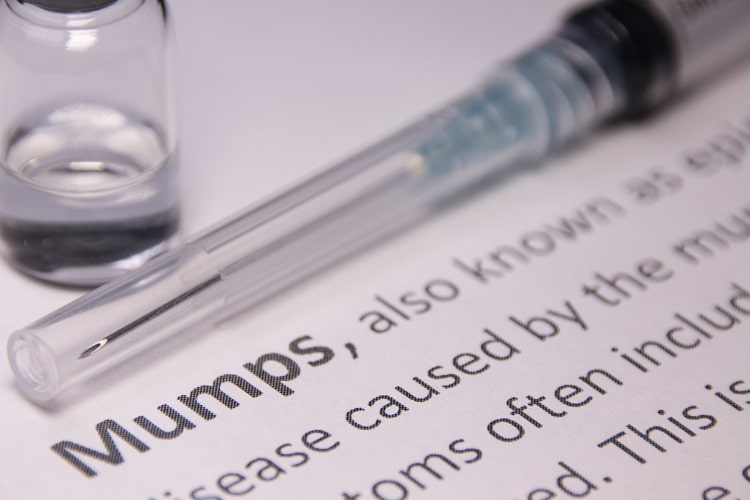
Mumps
Mumps is a viral disease whose main target is the parotid salivary gland, and can cause complications, such as encephalitis, meningitis, orchitis (inflammation of the testicles), oophoritis (inflammation of the ovaries), deafness, and pancreatitis, but death is rare. The mumps virus causes fever, headache, muscle aches, tiredness, loss of appetite, and swollen and tender salivary glands under the ears on one or both sides. The herd immunity threshold for mumps is about 90%. Though the disease is no longer common in the developed world, mumps outbreaks still occur in the US, especially in areas of close contact, such as schools, colleges, and camps.
Photo Credit: Hailshadow / iStock / Getty Images Plus

Rubella
Rubella (also known as German measles) is a mild infection in children but can be serious in pregnant women due to the risk of congenital infection. The rubella virus causes fever, sore throat, rash, headache, and eye irritation. In up to half of adolescent and adult women, rubella causes arthritis. If a woman gets rubella while she is pregnant, she could have a miscarriage, or her baby could be born with serious birth defects. To prevent outbreaks, at least 85% of the population should be immune to rubella.
Photo Credit: Manjurul / iStock / Getty Images Plus
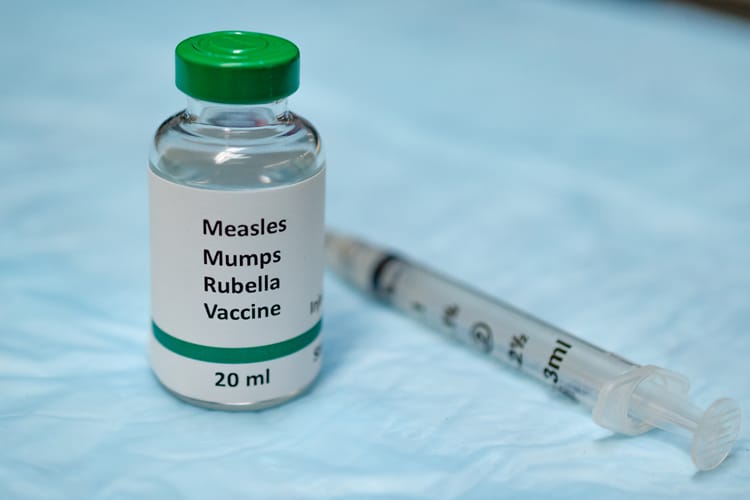
The MMR Vaccine
The MMR vaccine contains weakened versions of live MMR viruses. The vaccine works by triggering the immune system to produce antibodies against MMR. The MMR vaccination is recommended for all health care professionals in the US. The World Health Organization has not provided any specific recommendations or evidence of measles immunity in health care professionals. Currently accepted proof of immunity includes documented administration of two MMR vaccine doses separated by at least 28 days, laboratory evidence of immunity, and laboratory confirmation of disease. In the US, one or two doses of MMR vaccine are recommended for all unvaccinated health care professionals without laboratory-confirmed disease or immunity against MMR during nosocomial outbreaks.
Photo Credit: Manjurul / iStock / Getty Images Plus
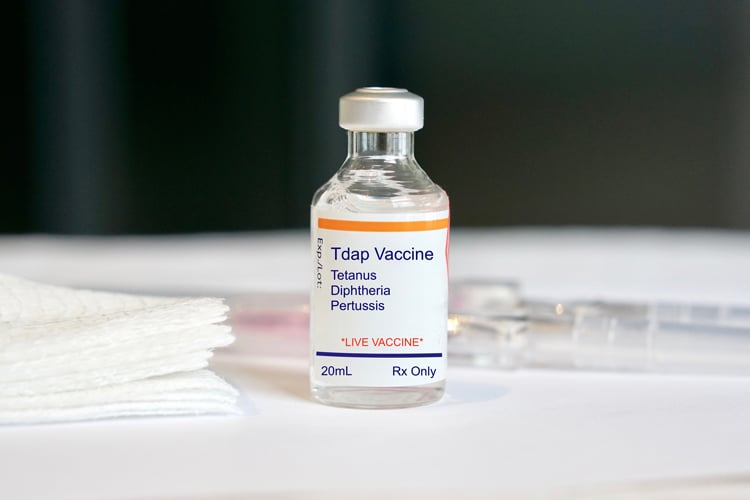
Pertussis, Tetanus, Diphtheria
Pertussis or whooping cough is a highly-transmissible respiratory disease. It causes severe coughing spells, which can lead to difficulty breathing, vomiting, disturbed sleep, weight loss, incontinence, and rib fractures. Tetanus is caused by the bacterium Clostridium tetani. Tetanus enters the body through cuts, scratches, or wounds. Contamination of wounds with tetanus spores in unimmunized persons can evoke illness with muscle spasms and sometimes death. It causes painful muscle tightening and stiffness usually all over the body. Diphtheria usually produces respiratory symptoms or it can affect other organs and can cause death. A thick coating is formed in the back of the throat leading to breathing problems, heart failure, paralysis, or death. Cases are rarely seen in the US.
Photo Credit: Samara Heisz / iStock / Getty Images Plus
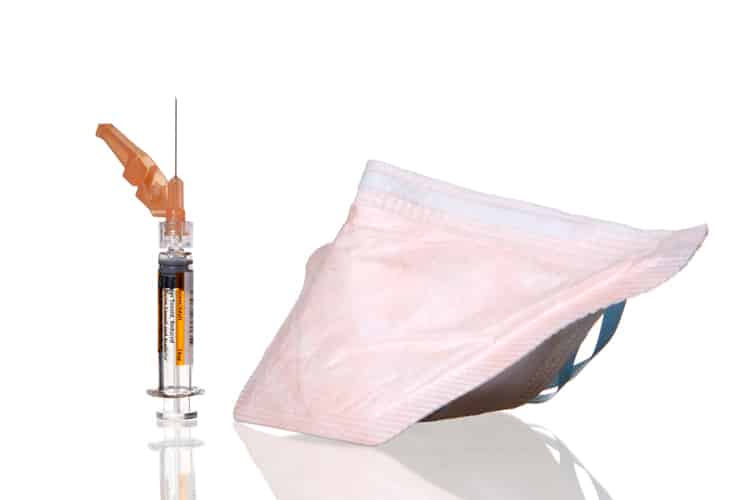
Tdap
Generally, vaccination offers the best protection against pertussis infection. In 2006, the Advisory Committee on Immunization Practices (ACIP) recommended that health care professionals ages 19 to 64 receive a single dose of the tetanus, diphtheria, and acellular pertussis vaccine (Tdap) to reduce the risk of transmission of pertussis in health care institutions. In 2010, the ACIP indicated that all health care professionals, regardless of age should receive a single dose of Tdap as soon as possible if they had not previously received Tdap. Another vaccine called Td protects against tetanus and diphtheria, but not pertussis. A Td booster should be given every 10 years.
Photo Credit: jenjen42 / iStock / Getty Images Plus
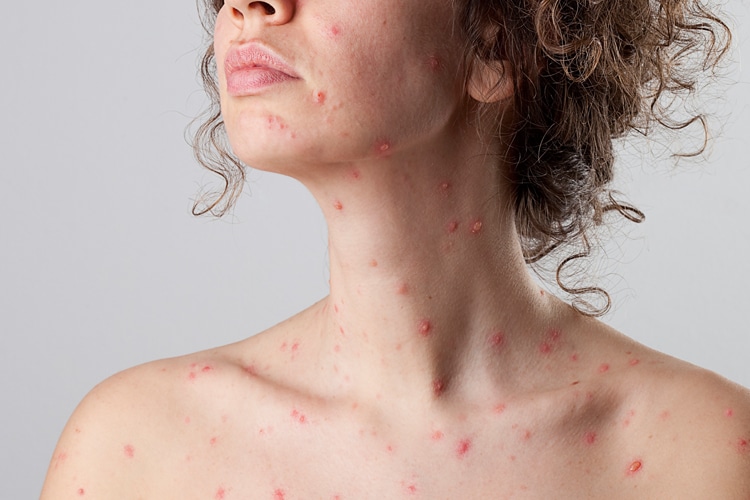
Chicken Pox
Varicella, or chickenpox, is caused by varicella zoster virus (VZV), which is a herpes virus. It is a highly contagious disease that is spread by contact with respiratory droplets and/or vesicle fluid. It is usually self-limited but may cause severe complications such as lower respiratory tract infection, skin and soft tissue infection, or even death. In 1996, two doses of varicella vaccine administered 4 weeks to 8 weeks apart were recommended for susceptible adults, including health care professionals. However, seroconversion to vaccination may not ideally correlate with protection, as vaccine-induced antibody titers can decline or disappear over time. Vaccination has greatly reduced varicella incidence, resulting in declines in varicella exposures in health care settings. Nevertheless, VZV exposures still occur particularly from herpes zoster cases. Once infected, health care professionals may transmit infection to coworkers and patients.
Photo Credit: CactuSoup / E+

The Flu
Influenza is an infectious disease caused by an influenza virus that can affect humans, as well as birds, pigs, and chickens. Seasonal flu vaccines are designed to protect against infection and illness. How well the flu vaccine works or its ability to prevent flu illness can range widely. The vaccine’s effectiveness can also vary depending on who is being vaccinated. Research assessing the benefits and risks of the flu vaccine in both health care professionals and their patients support the vaccine effectiveness and efficacy; thus, the ACIP recommends that all health care professionals and those in training receive an annual vaccination.
Photo Credit: chee gin tan / E+

Improving Public Health
Vaccines are continuously being developed, monitored, evaluated, and revised through recommendations provided by the ACIP. Health care professionals need to be familiar with these ongoing changes to protect themselves from exposure to infectious diseases and educate their patients about the importance of immunizations. As health care continues to move toward an interprofessional approach, the oral health professional has the potential to be instrumental in improving public health outcomes.

